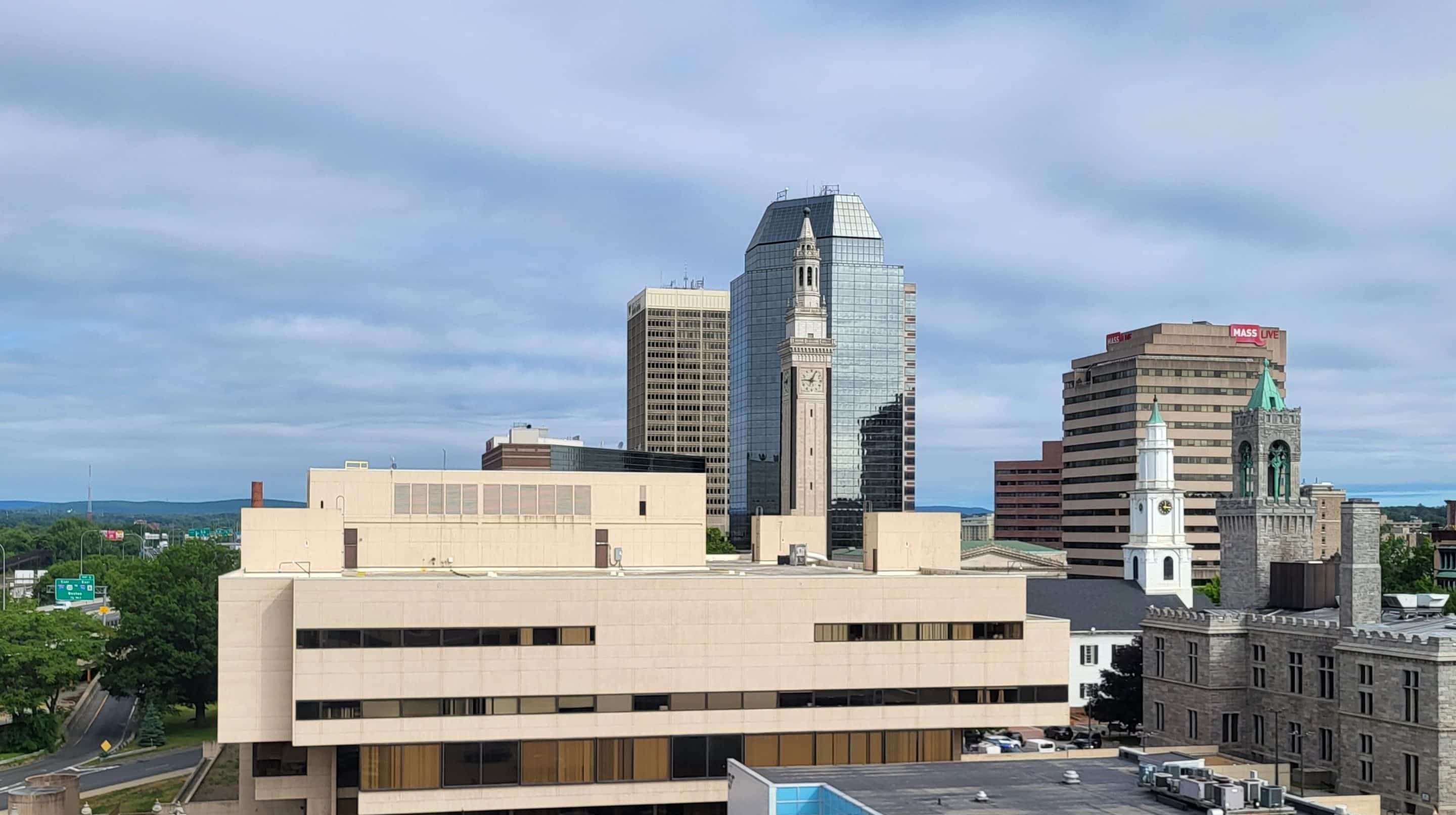SPRINGFIELD — Two local developers are planning to submit a proposal for the new Springfield Regional Justice Center to be placed at the corner of Chestnut and Lyman streets.
Balise Auto Sales President Jeb Balise and Tom Dennis — president of the Dennis Engineering Group — earned an exemption from the city’s Historical Commission so they can demolish the four buildings at 101-103 Lyman St., 113 Lyman St., 127 Lyman St. and 186 Chestnut St.
The exemption, known as a demolition delay exemption, was sought in an effort to submit a bid for the new courthouse.
Because the buildings are over 75 years old and considered historically significant, the developers would’ve had to follow a nine-month demolition delay, according to a Historical Commission application checklist. The exemption granted by the commission lifts that delay and allows them to commence demolition immediately.
The state would ultimately have to approve any proposal of a new courthouse by the developers.
“Jeb Balise and Tom Dennis are partnering with respect to this site as a proposed site for the courthouse,” said Timothy Ryan, the local lawyer representing the partners. “They will be submitting by the submittal date.”
Having been built in the 1800s, the 113 Lyman St. and 127 Lyman St. buildings currently reside on the National Register List of Historic Places, but according to Ryan, the buildings — which used to be the Cutler and Porter Block and Produce Exchange buildings — have deteriorated, which is why they want them demolished.
He showed the commissioners at the Sept. 18 Historical Commission meeting pictures of warping floors, crumbling ceilings, water damage and mold.
The other buildings, meanwhile, are currently a masonry of one-story garages. The Bruce Wright Group LLC, with Dennis as the principal, has owned all four properties since 2001, and efforts to rent out the Lyman Street spaces have been unsuccessful.
The group also said that the buildings have been marketed to investors from Boston and New York since 2007, but investors have continuously said that remediation work on the buildings could not be done because the buildings were functionally obsolete.
From a marketing standpoint, the group feels they’ve exhausted every other option available regarding remediation and reuse.
“We look at this as a significant opportunity for the neighborhood and the downtown,” Balise said, referring to the demolition and courthouse proposals. “We believe it’s a compelling bid to make, but we get we may not be picked.”
The developers’ proposal comes at a time when the state’s Division of Capital Asset Management and Maintenance is seeking requests for proposals for a 220,000-300,000-square-foot Regional Justice Center within a half mile of transportation. Bidders have until Oct. 16 to submit their proposals, according to the solicitation document.
Available since the end of June, the RFP comes several months after state’s Asset Management Board approved a proposal from the Trial Court to pursue a long-term lease for a new courthouse in Springfield with an initial term of 40 years and a maximum term of 60 years.
The proposed justice center will house the Hampden County Superior Court, Springfield District Court, Hampden Probate and Family Court, Springfield Juvenile Court and the Western Massachusetts Housing Court.
The need for a new courthouse is because the current Roderick J. Ireland Courthouse has experienced a long history of poor environmental health conditions, including an accumulation of mold and dust that has led to respiratory and fatigue problems for those who work in the building.
Reactions to the Lyman Street proposal have been mixed. Erica Swallow, the president of the Springfield Preservation Trust, sent a letter to the commission on behalf of the SPT saying that they are “adamantly opposed to the demolition of these architecturally and historically significant buildings,” referring specifically to the 113 and 127 Lyman St. ones.
The SPT said that demolition is “wasteful” and “shortsighted,” arguing that the buildings are instead great candidates for adaptive reuse.
“Demolition for ‘the betterment of Springfield’ is the stated reason,” Swallow’s letter said. “Vacant lots, destruction of viable, reuse property for no stated or proposed usage, can never be for the ‘betterment of Springfield.’”
Betsy Johnson, the president of the Metro Center Association — which covers downtown — said the association has not taken any position on the Lyman Street proposal as of press time, but they still want the courthouse to be relocated in the downtown Springfield area.
“If we can help out the owners and their potential for having a viable bid for the courthouse, if that at least helps with the demolition of the garages and being able to immediately address the hazardous waste issues there, we would be in support of that,” Johnson said.
Following the Historical Commission vote, At Large City Councilor Sean Curran sent a press release in support of the Lyman Street proposal, calling it a “game changer for downtown Springfield.”
He noted the location, proximity to Union Station and ability to spur economic development as reasons for having the courthouse in that area.
“It will transform the city and the neighborhood for the better,” Curran said.
Balise said the developers will move at “light speed” to properly clean the site so it can be shovel-ready for development, even if the courthouse proposal is not approved.
“And obviously if it’s not the courthouse, we will move swiftly to find really good development for downtown,” Balise said. “We’re here to address the whole truth. And what we need to do is make that site shovel ready for a courthouse or another project.”
The Historical Commission unanimously approved the exemption of the demolition delay with the hope that the historical façade in the design be recreated.


